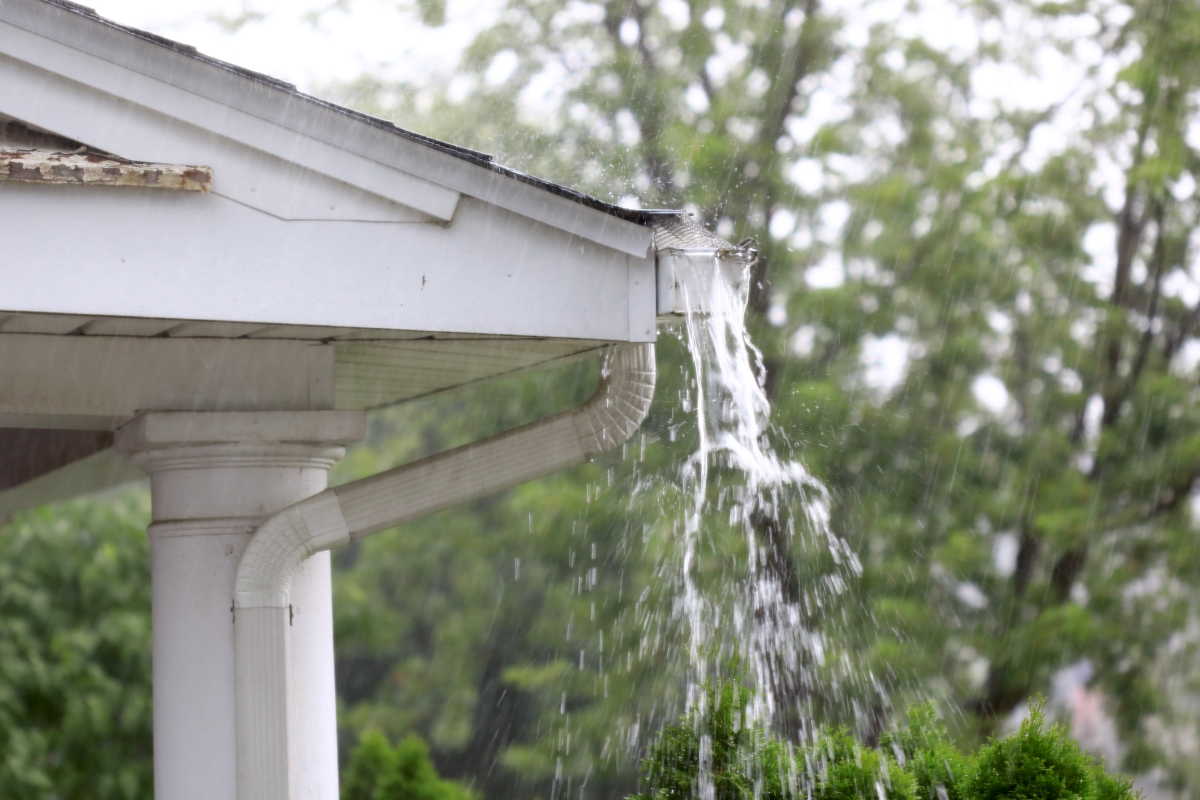We may earn revenue from the products available on this page and participate in affiliate programs. Learn More ›
Rain gutters take a lot of abuse: rushing water during rainstorms, exposure to weather extremes, heavy loads of snow in the coldest climes, clogs of fallen leaves, and the general ravages of time. Because of that, their longevity is typically much shorter than your home’s lifespan. Depending on the material, rain gutters generally last anywhere from a decade to 100 years.
That said, a leak or two doesn’t automatically mean it’s time for gutter replacement. Often, you can fix leaking gutters yourself and get years more service from your existing setup. Here’s what to do if you see water dripping out of the gutters, notice water running down the sides of your house, or find puddles underneath the gutters.
Why It’s Important to Maintain Rain Gutters
Leaking rain gutters can cause costly damage to your home. The purpose of all types of rain gutters is to move water away from the base of your house, into downspouts and out into a safe discharge zone. When they fail to do so, you can wind up with water in the basement, damage to the foundation, and mold and mildew growth inside your home, among other problems. If you have a rainwater-harvesting system, leaky gutters mean you’re losing that precious resource.
4 Ways to Fix a Leaky Rain Gutter
1. Clean the gutters.
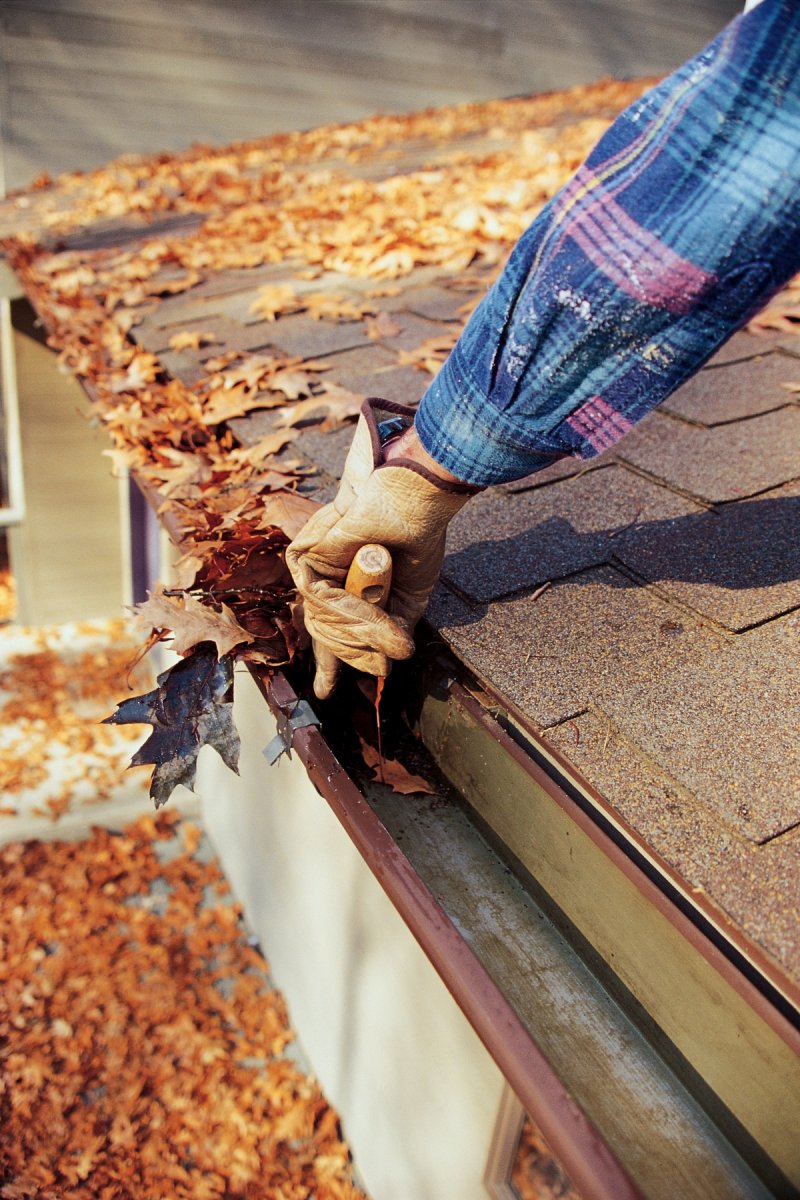
If rushing rainwater hits a blockage while running through gutters, it’s going to surge up and over that blockage, usually spilling over the sides of the gutter. Once the storm is over, grab your ladder and a pair of sturdy work gloves, and take a look inside the rain gutters. If they are full of sodden leaves and smelly muck, it’s likely that your problem isn’t so much a leaking gutter as a spillover.
Using a small trowel, a gutter scoop, or your gloved hands, clear as much debris from the gutters as possible, dropping it into a bucket for disposal. Then use a power washer or the strongest blast from your garden hose to clear away any remaining grunge. Once gutters are clean, use your garden hose to fill them up with water, and watch for leaks. If water runs through to the downspout without a hitch, you’ve solved the problem.
2. Seal cracks and holes.
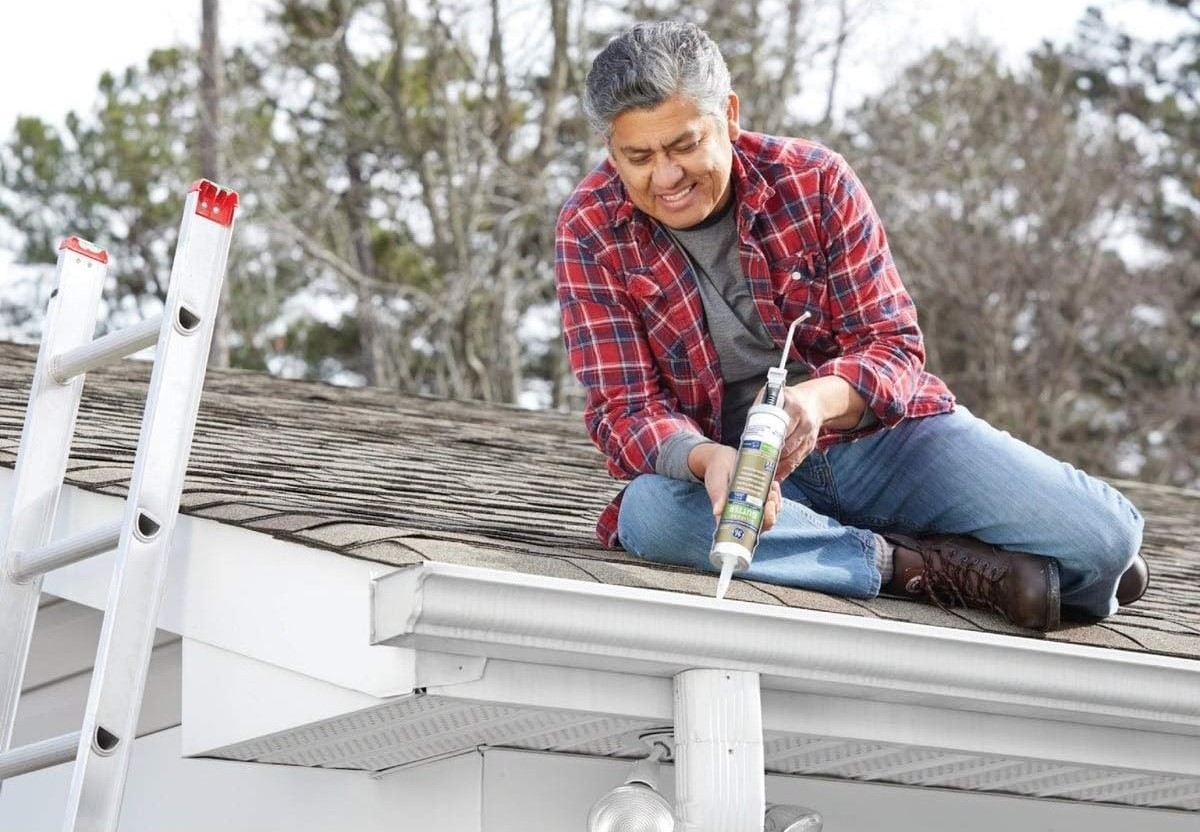
As gutters age, it’s common for them to develop small cracks and holes where gutter sections screw together, due to rust and general wear at the weakest point in the gutters. If this is the case, you’ll usually spot drips coming down from the joints, and may want to consider rain gutter leak repair.
While not a permanent fix, you can generally get another season or two out of the gutters (as long as the damage isn’t extensive) by sealing a gutter seam using silicone or rubber gutter caulk or gutter sealant. A waterproof sealant such as GE Clear Gutter Caulk is easy to use: Simply squeeze this gutter seal into cracks and holes, then apply a further coating around the entire gutter joint.
3. Tighten up loose gutters.
Over time, rain gutters often start to pull away from the roof, allowing water to drip over the gutter sides or between the gutters and the walls. Usually, this is due to gutter fasteners rusting or loosening after years of temperature extremes and exposure to water. As you work to re-secure saggy or loose gutters and execute other gutter leak repairs, keep in mind there should be no more than a ¼-inch drop in the direction of the downspout.
- Replace loose or rusted spikes with a thicker and longer nail, or better yet, a long screw into a new hole for maximum hold. Rain gutter spikes or screws should be at least 7 inches long, and 8 is even better.
- If your gutters are attached with screws, remove the old screws. You might be able to put new screws into the old holes, but if the holes are stripped, drill new holes above the existing ones.
- If clips or brackets hold your gutters, replace broken clips by unscrewing the old clip, and then fastening a new one in place. You’ll find rain gutter clips at any home improvement center in packages of 10 to 50, and they generally cost less than $1 per clip. Use a manual or power screwdriver to securely fasten the clips to the fascia along the edge of the roof.
- If the clips are okay but are missing screws, replace the screws with new ones that match the size of the clip’s screw holes. The screws should be at least two inches long to hold the gutter clip firmly in place.
4. Make sure that water can flow through the downspout.
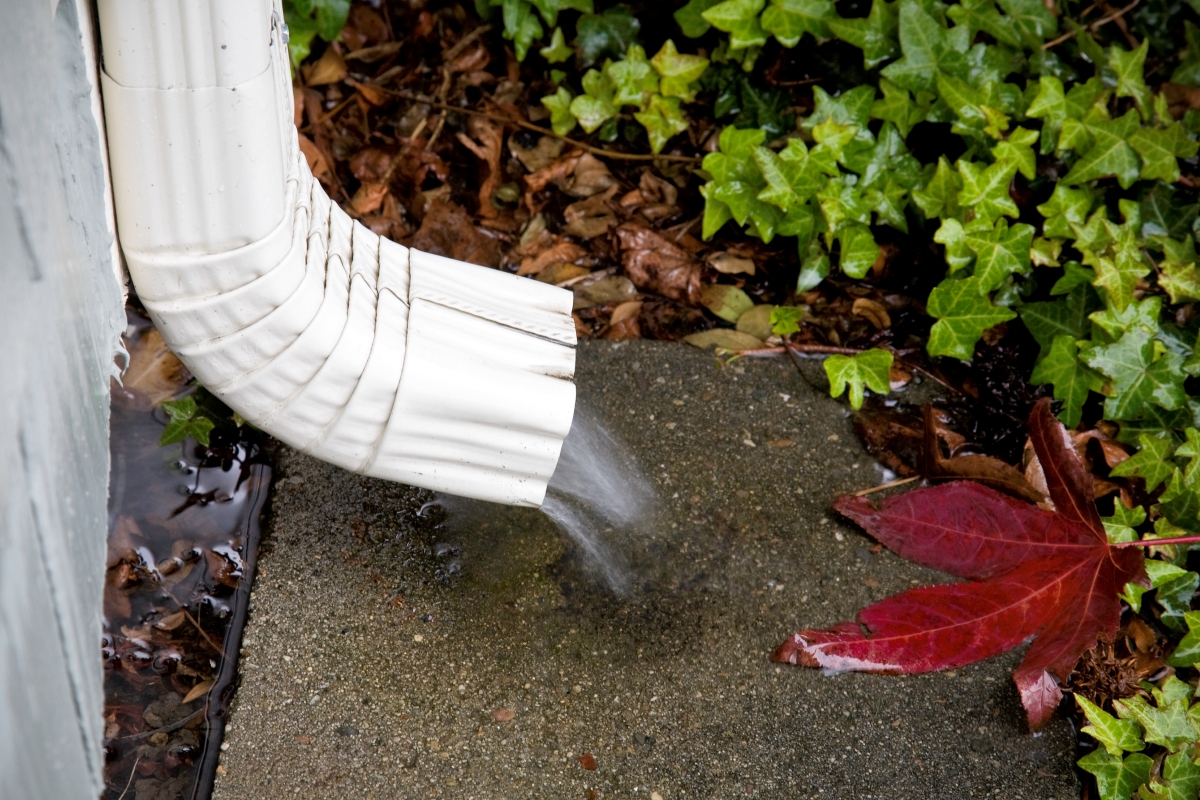
After you clean your gutters, make sure that water flows through them properly. The way to check this is to run water from a garden hose into the gutter at the top of the downspout, and watch the drainage at the bottom. If water backs up out of the downspout instead of draining, remove the downspout’s base—this will generally slip off—and use a broom handle or long stick to dislodge leaves and other debris from inside the downspout. You might need to run a strong blast of water from the hose to dislodge stubborn blockages.
5. Give your gutters an apron.
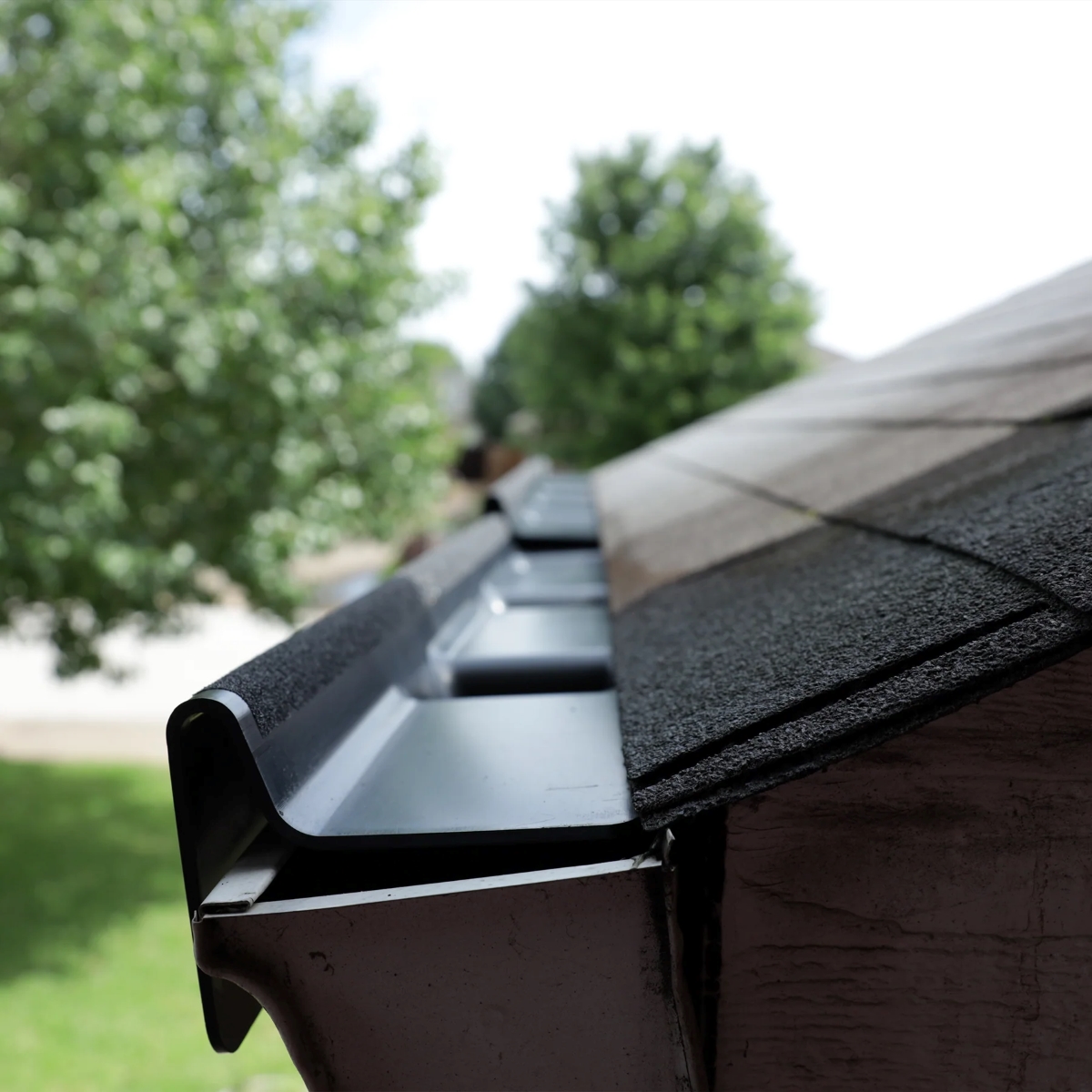
Sometimes, rainwater makes its way down between the gutters and the walls, even though the gutters are secured in place. You’ll notice water running down the walls during a rainstorm, or puddling on the ground at the base of the walls.
This problem can be fixed with gutter aprons or drip edges. These L-shaped lengths of metal flashing attach to the edge of the roof under the shingles with roofing nails; they angle down over the inner edge of the gutter, eliminating any gaps between the gutter and the wall and channeling rainwater directly into the gutter. Generally sold in 10-foot sections, gutter aprons are available at most home improvement centers for less than $10 per section.
How Often to Replace Gutters
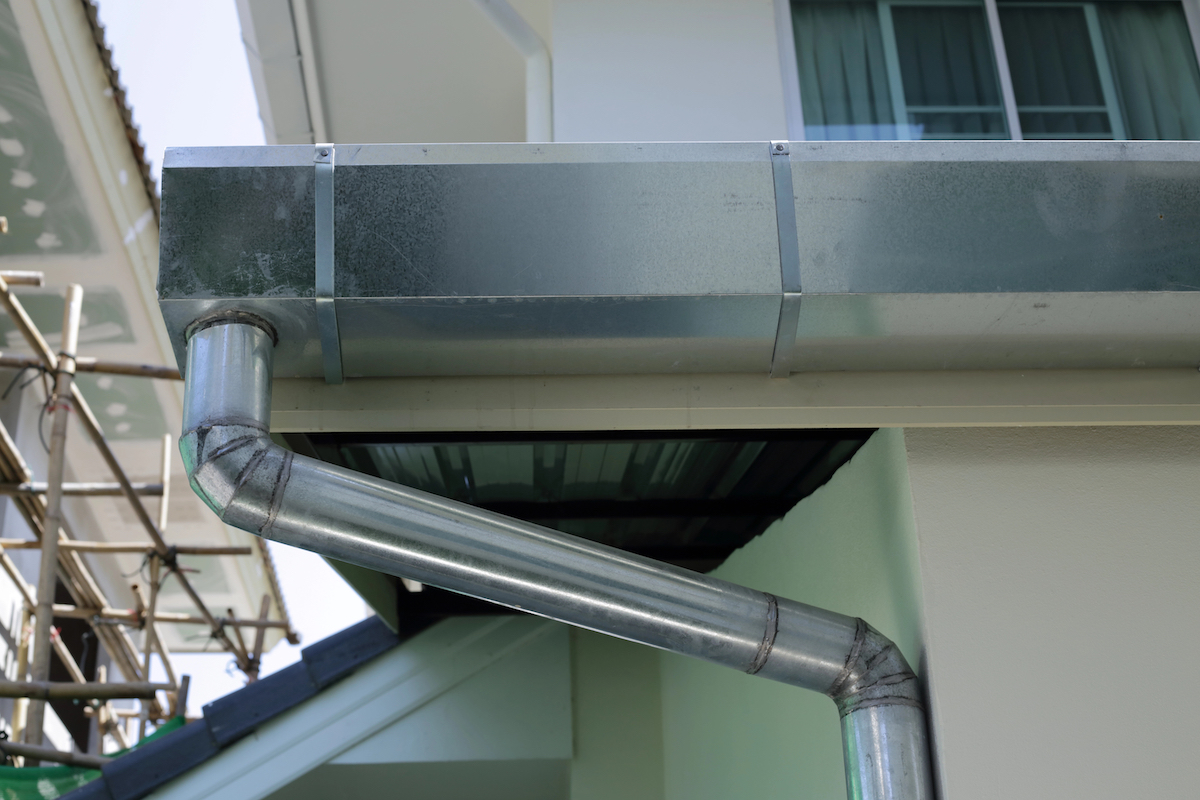
How long your gutters will last has everything to do with the materials from which they are made.
- Vinyl gutters typically last 10 to 15 years
- Aluminum gutters can last for about 25 years, maybe 30
- Expect stainless steel gutters to last 25 to 30 years
- Copper gutters can last 50 years or more
These are estimates, of course, and will vary. Improperly installed gutters, for example, can shorten their lifespan, as can inadequate ongoing maintenance. Repeated severe weather, too, can have an adverse impact on gutter longevity. If you’re spending too many afternoons repairing your gutters, it might be time to replace them.
Tips for Maintaining Gutters
Keep your gutters in good shape with the following tips.
- Clean rain gutters each spring and fall, removing fallen leaves and grunge.
- Consider installing quality leaf guards or mesh over the gutters if your home is surrounded by a lot of deciduous trees.
- Sweep heavy loads of fallen leaves off your home’s roof, as these are likely to make their way into the gutters.
- Inspect rain gutters annually for cracks, holes, loose or missing screws, and other damage. It’s better to fix problems right away, rather than wait until you find your gutters leaking.
- Check downspouts to ensure they’re not loose. You might need to replace or reattach downspout straps, which are metal brackets that screw into the side of the house to hold the downspout in place. You’ll find downspout straps for under $5 at most home improvement centers.
